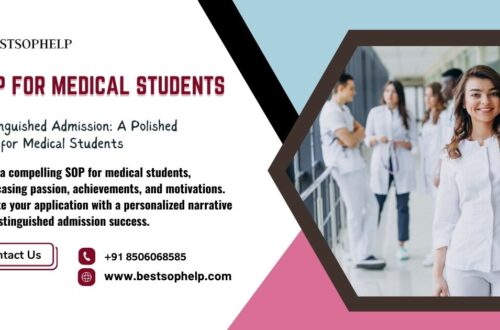
What are the steps to become an SDET?
As someone who has traversed the path to becoming a Software Development Engineer in Test (SDET), I understand the curiosity and eagerness that accompanies this career choice. Transitioning into an SDET role requires a strategic approach and a commitment to continuous learning. In this comprehensive guide, I will outline the essential steps to embark on this rewarding journey.
Understanding the Role of an SDET
Before delving into the steps, it’s crucial to comprehend the role of an SDET. Software Development Engineers in Test (SDETs) play a pivotal role in ensuring the quality and reliability of software products. They blend their expertise in software development with robust testing skills to create automated test frameworks, write test scripts, and identify bugs early in the development process. SDETs contribute significantly to the software development lifecycle, fostering a culture of quality and efficiency.

Step 1: Acquire a Strong Foundation in Software Development
The first step towards becoming an SDET is to build a solid foundation in software development. This entails gaining proficiency in programming languages such as Java, Python, or C#. Familiarity with object-oriented programming concepts, data structures, and algorithms is essential. Online resources, coding bootcamps, and formal education programs offer excellent avenues to hone your coding skills and deepen your understanding of software development principles.
Step 2: Master Testing Techniques and Methodologies
Transitioning into an SDET role necessitates mastering various testing techniques and methodologies. Familiarize yourself with both manual and automated testing processes, understanding their strengths, limitations, and when to apply each approach. Gain expertise in popular testing frameworks such as Selenium, Appium, and JUnit. Additionally, grasp fundamental concepts like test planning, test case design, and defect tracking to become a well-rounded SDET.
Step 3: Gain Hands-On Experience with Testing Tools and Technologies
Practical experience is paramount in the journey to becoming an SDET. Engage in hands-on projects and internships that allow you to apply your software development and testing skills in real-world scenarios. Influence testing devices and advances to make computerized test suites, execute experiments, and dissect test results. Teaming up with experienced experts and taking part in code audits will give important bits of knowledge and speed up your expectation to learn and adapt.
Step 4: Cultivate Problem-Solving Skills
As an SDET, you’ll encounter various challenges requiring creative problem-solving abilities. Cultivate a mindset geared towards identifying and resolving issues efficiently. Work on separating complex issues into reasonable parts and concocting powerful arrangements. Working together with peers on coding difficulties and taking part in hackathons can improve your critical thinking abilities and expand your point of view.
Step 5: Stay Updated with Industry Trends
The field of software development and testing is constantly evolving, with new technologies and methodologies emerging regularly. Stay abreast of industry trends, advancements, and best practices by actively engaging with online communities, forums, and professional networks. Go to gatherings, online classes, and studios to acquire experiences from industry specialists and extend your insight base. Embracing long lasting learning is vital to flourishing as a SDET in a dynamic and quick moving climate.
Step 6: Specialize and Diversify Your Skill Set
While proficiency in software development and testing is foundational, consider specializing in specific areas to enhance your expertise. Explore niche domains such as performance testing, security testing, or mobile app testing to differentiate yourself in the job market. Diversifying your skill set not only broadens your career prospects but also equips you with the versatility to adapt to evolving industry demands.
Step 7: Pursue Advanced Certifications and Training
To augment your credentials and demonstrate your proficiency as an SDET, consider pursuing advanced certifications and specialized training programs. Certifications such as ISTQB Advanced Test Automation Engineer or Certified Selenium Professional validate your expertise in automated testing frameworks and methodologies. Moreover, high level instructional classes in regions like DevOps, constant joining, and efficiency tuning can extend your range of abilities and upgrade your profession possibilities.

Step 8: Seek Mentorship and Professional Guidance
Navigating the complexities of the software testing landscape can be daunting, especially for those new to the field. Seek mentorship from seasoned SDETs or industry veterans who can offer valuable insights, guidance, and career advice. Participate in mentorship programs, organizing occasions, or online networks where you can associate with tutors able to share their encounters and assist you with exploring your profession way actually.
Step 9: Explore Leadership and Management Opportunities
As you progress in your career as an SDET, consider exploring leadership and management roles that allow you to leverage your technical expertise while leading teams and driving strategic initiatives. Administrative roles, for example, Test Lead, QA Chief, or Delivery Supervisor offer chances to coach junior colleagues, regulate testing processes, and add to the general outcome of programming projects. Creating initiative abilities and developing a proactive, results-driven mentality can open ways to invigorating professional successes
Key Takeaways
- Pursue Advanced Certifications: Enhance your credentials with advanced certifications and specialized training programs to validate your expertise and stay competitive in the job market.
- Seek Mentorship: Leverage mentorship from experienced professionals to gain valuable insights and guidance as you navigate your career journey in software testing.
- Explore Leadership Roles: Consider transitioning into leadership and management positions to leverage your technical skills and contribute to the strategic direction of software development projects.
Also read blog how to fix wordpress error.
Proceeding with a proficient turn of events, mentorship, and investigating initiative open doors are fundamental parts of your professional success as a SDET. By embracing these means, you can graph a fulfilling and satisfying profession in programming testing and quality confirmation.




